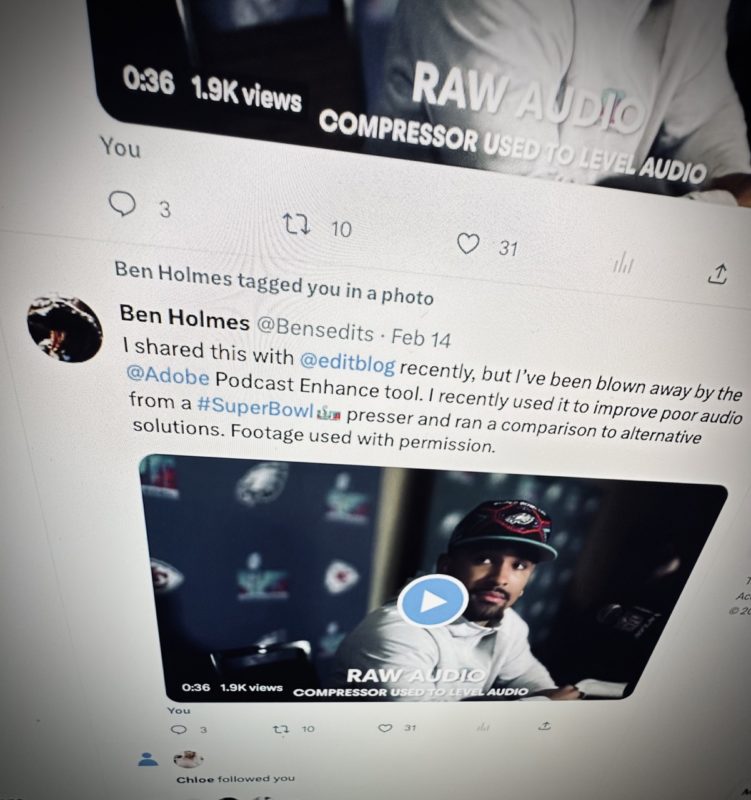Let’s talk AI voice isolation for just a second because when you talk AI voice isolation, more than anything else, you want to hear some AI voice isolation comparisons.
Well, that’s what you get in this video posted to Twitter (by Ben Holmes) the other day, so I thought I would include it here because not everyone is on Twitter.
I shared this with @editblog recently, but I’ve been blown away by the @Adobe Podcast Enhance tool. I recently used it to improve poor audio from a #SuperBowl presser and ran a comparison to alternative solutions. Footage used with permission. pic.twitter.com/0onYT9v0xT
— Ben Holmes (@Bensedits) February 14, 2023
Ben sent me this video the other day, before the Super Bowl, as we often talk editing and post-production tech, and I was hoping he could share it publically. It’s a great real-world example of where you might really, really need to clean up a voice recorded in a noisy environment. This type of thing can be the bane of the editor’s existence. You have a clip that you have to use, but you don’t have the time or budget to send it out for professional audio clean-up, and maybe you don’t have the iZotope RX software or the skills to use a tool like that.
Enter the new round of voice isolation tools rolled out in the AI era. Final Cut Pro was the first to add this to an NLE, and DaVinci Resolve was quick to follow. The Adobe alternative used above is, currently, a service outside of Premiere Pro, but I would fully expect something this good to get integrated into both Audition and Premiere at some point. While cleaning up a podcast is a great way to promote it, voice clean-up like this is a necessity in the NLE.
With “ok” sound it’s remarkably good. Again with the proviso it does make it almost *too* good to be true on occasions. It is still years ahead of @iZotopeInc at this point. Look forward to seeing this inside @AdobeVideo apps #postchat
— Ben Holmes (@Bensedits) February 14, 2023
I was surprised iZotope didn’t sound any better, but I don’t think the RX tools are using some of this new AI-power technology just yet. Instead, it’s just the old-school (but quite legendary, I might add) Izotope magic that has powered Izotope RX for years. But this shows that legacy technology might get eclipsed by our AI-powered overloads.
While Final Cut Pro wasn’t in Ben’s original comparison, PostChat.io’s Felipe Baez grabbed this example and ran it through FCP’s voice cleanup feature as well.
Impressive from FCP, Resolve and Adobe all three. This will indeed be very useful to all the editors out there.
There are subtle differences in each of the NLE voice isolation results and depending on the use case, one might work better than the other. Which do you think sounds best? Let us know in the comments below.
Thanks to Ben and Felipe for putting this little comparison together!
Oh, and about Twitter. I’ll say it again; we still have a robust editing and post-production Twitter community going on over there despite the Elon mess, so don’t give up on #postchat Twitter just yet but just in case we have other alternatives.

